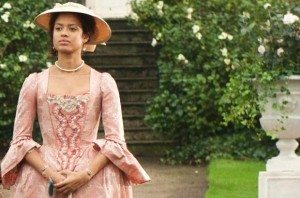Belle
Director: Amma Asante
Cast: Gugu Mwatha-Raw, Tom Wilkinson
Length: 104 min
Country: UK
The largely forgotten tale of Dido Elizabeth Belle, a mixed race aristocrat living in eighteenth century England, is stunningly brought to life in Amma Asante’s gorgeous period biopic. Dido is the product of a love affair between a Royal Navy Admiral and an ex-slave. After her mother’s death, Dido’s father takes her to live under the protection of her great-uncle and, in what was an extraordinarily unusual move at the time, Lord Mansfield chose to raise his two nieces (Dido and her white cousin, Elizabeth Murray) as practically equal, even choosing to have them painted together. As Dido comes of age and leaves her sheltered home for the pleasures and perils of London, Lord Mansfield’s position as Lord Chief Justice means that he must prepare to give judgement on one of the most important legal battles in the history of the slave trade.
In the tradition of other films set in the eighteenth century like Dangerous Liaisons (1988) and The Duchess (2008), Belle is visually stunning. Asante makes the most of what is probably one of the most luxurious and decorative periods in British fashion and if nothing else, the film functions as an elaborate showcase for the costume designer’s skills in creating envy-inducing gowns, hats, cloaks and hairstyles. The cinematography is also very impressive, bathing everything in a luminescent glow to convey the luxuriant lifestyles of the fabulously wealthy aristocrats of the period.
The story of Dido’s struggle to find acceptance and love despite her position as outsider and Lord Mansfield’s ruling on the Zong massacre is executed somewhat formulaically but hits all the right notes. At times the film’s dialogue struggles to achieve the right balance between period suitability and what sounds acceptable to a modern audience, and some of the actors strive to make ungainly and overwritten lines sound natural. Especially as the film draws to a close, Hollywood clichés abound, but its undeniable large-heartedness means that you may very well choose to abandon your cynicism and enjoy Belle for what it is: an uplifting and sweepingly romantic story about love, justice and identity.
There isn’t a weak performance amongst the cast. Many of our great British actors, like Miranda Richardson, Penelope Wilton, Matthew Goode and Emily Watson, are wheeled out to give the commanding performances one expects from them. Another stand out is Tom Felton, playing the slimy suitor of Dido’s cousin, Elizabeth, whose role can most easily be described as ‘Draco Malfoy with a curly wig on’. But the film’s top performances are undoubtedly given by relative newcomer Gugu Mbatha-Raw as Dido and Tom Wilkinson as her great uncle, Lord Mansfield. Wilkinson sensitively conveys the hesitation of a stubborn man caught among conflicting social pressures, and gives a nuanced interpretation of Lord Mansfield. Gugu Mbatha-Raw is an excellent lead, providing the emotional centre of the film and depicting Dido’s journey from sheltered girl to forthright woman.
But Belle is an important film, not only for what it is but for what it represents. With a mixed race leading lady and two black women as writer and director, this is a far cry from the typical Hollywood blockbuster about slavery like Lincoln (2012). Instead of being made by and starring white men, with black characters serving only as symbols of an oppressed race, Belle gives us the story of the slave trade from a new and timely perspective. Just as the Zong massacre was instrumental in the abolition of slavery in Britain, let’s hope that Belle signals the start of a new era of filmmaking which restores women and ethnic minorities, so often side-lined by history, to the place they justly deserve.



Comments